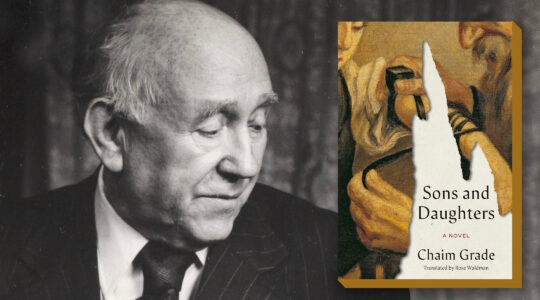NEW YORK (JTA) — Much has been said and written about the financial priorities of the Jewish community and whether they are misdirected. All too often in these discussions, an artificial dichotomy is created between two goals: sustaining American Jewish support for Israel and attending to the domestic priorities of the community in the United States.
Reams of paper have been used in arguing where the financial priorities of the community should lie.
We need more and more to integrate these two challenges: to recognize, as the Taglit-Birthright Israel project has, that rather than a competition, the twin goals of strengthening Israel and strengthening the American Jewish community are linked and reinforce each other.
I believe the best way to strengthen a Jewish community that is diminishing through assimilation is through Jewish education. That is why, in my recent remarks to the Israeli Presidential Conference in Jerusalem, I called for a five-year, $500 million-per-year reinvestment in the Jewish Diaspora.
For whatever reason, it is very difficult to raise money in the Jewish community in the United States for Jewish education. It has always been much easier to raise money for Israel. Raising funds for Israel is certainly important. But what if we redirected some of the community purse back to the U.S. for the purpose of giving the next generation the possibility of a fuller immersion into Jewish life through all that a Jewish education has to offer?
Education, among other things, makes the real Jewish connection to Israel. And the best way to ensure continued Jewish support for Israel is by having a highly identified Jewish community.
Let’s face it: American Jewish ignorance on Israel is the primary obstacle to American Jewish identity, continuity and American Zionism.
Here is where we are falling down as a community. Too many young Jews receive only rudimentary Jewish training. And those who do often stop studying and practicing their faith at age 12 or 13, right after their bar mitzvah or bat mitzvah.
Throughout the crucial teenage years, when peer pressures are intense and young people are truly learning what it means to be responsible adults in a confusing and challenging world, we neglect their spiritual development and allow the highly secular mass media and educational systems to work on them unchecked. When they go off to college, we hope that Hillel and other Jewish campus organizations will attract them. But why should they when our Jewish youth have seen their religion and their being Jewish treated as unimportant in their own homes and communities?
Why not let American Jews continue to raise the money for Israel, but let Israel take the money and invest in American Jewry. Invest in the infrastructure of day schools, whether Reform, Conservative, Orthodox or Reconstructionist, and to make scholarships available so that Jewish schools can be more affordable, especially for those students most willing to continue their Jewish education through high school and beyond.
Times have changed. Many years ago, when Israel was struggling to survive as a fledgling agrarian nation-state, $500 million would have been a princely sum. Today, Israel is a nation that has its own millionaires. The economy and tourism are robust and growing. That sum of $500 million is not as significant in Israel as it used to be.
Imagine how far we could advance Jewish education with such a commitment, which comes to $2.5 billion over five years. That is a significant sum of money for schools, scholarships and teachers.
A certain percentage of the money — perhaps 20 percent — should be invested in programs to continue, enhance and ensure bringing young people to Israel. There should be no waiting list.
We have developed the most exciting audio-visual Jewish identity program that anyone could dream of and it is called Israel. We know it works. This is the tourniquet. I believe that if 100 children go to Israel, one-third will be Zionists forever, for one-third it won’t matter and one-third will be “different.” That is a pretty good investment for $3,000 per youngster.
The remaining 80 percent of the money should be invested in Jewish education in the U.S. — in expanding its infrastructure, in substantial tuition subsidies, and in paying teachers’ salaries that will attract the best and brightest. Only an estimated 35 percent of Jewish children are now attending private Jewish schools and yeshivas. The main reason is the cost, which averages $14,000 a year per child — and sometimes much more.
If I could, I would make Jewish day school education at all levels available and affordable for as many Jewish families as possible. This would mean building many new schools and providing scholarships for those who need them. It would be expensive, but worth every penny. Such a program could help bring about a vibrant Jewish future in America, which will reap benefits many times over in terms of future support for the Jewish state of Israel.
(Abraham H. Foxman is national director of the Anti-Defamation League.)
JTA has documented Jewish history in real-time for over a century. Keep our journalism strong by joining us in supporting independent, award-winning reporting.





